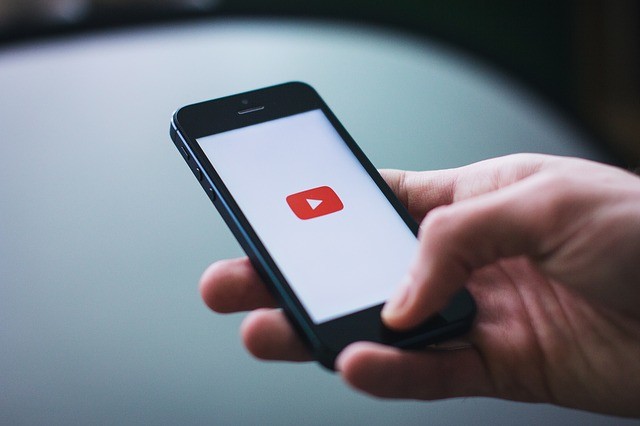Last Updated on 24th May 2021

It’s no secret that mobile will be the next big stage for marketers. The evolution is already changing at a rapid pace. Tools are not in short supply, but with so many options it can be difficult to know what form of mobile advertising will work best for your business. When it comes to online marketing, there is no one size fits all strategy, but there are a wide range of tools that can help you get some leverage. Below are your best mobile marketing options. At the very least mobile SEO should already be a key part of your strategy so you can future proof your business. If you don’t have a responsive site already which provides a positive user experience designed to meet the informational needs of those accessing on smaller screens you need to address this. If you have separate mobile and desktop websites you’ll need to be prepared for the forthcoming ‘mobile-first index’ which Google announced as the next stage in search engine results listings. This means the search engine will rank website pages based on mobile versions of pages over desktop. If you have a responsive site you need to worry less, but having a responsive site isn’t automatically a guarantee of a user positive experience. There may be less information you want to overwhelm visitors with on smaller screens and you will need to take this into consideration. Aside from organic search listings you may want to look at other ways to reach an audience on the move and wherever they are.
App-based
Apps enable you to interact with customers easily and conveniently. Providing the app offers value that can be sustained to the user you will have more benefit. For example, a cooking app updated with recipes is better than an audio walking tour users will only use once.
Mobile image ads
When publishing content in the modern digital landscape, you have to consider the device your customer will be receiving your content. Given most people access their mobile when in cafés, on public transport and in bed, huge swathes of textual content is not going to be appealing. The answer is images with ads, and there are many ways of producing images that will get your message across. You can produce content that deliver a message with free drawing tools downloaded from the internet, so just imagine what you can do with a professional package.
QR Codes
For some businesses, QR codes are an ideal way to directly connect with your customers. The best way to use them however, is to give the user a benefit in using them rather than just a sales message. For example, you can use them to deliver real-time information such as “your order has arrived.”
Mobile search ads
Google Adwords allows you to send paid advertising to mobile users. If you are doing a pay-per-click campaign and most of your customers are likely to be using their mobiles to browse the web, make sure to set the ads to target mobile users.
SMS
SMS is a little like the QR codes and can be intrusive unless they offer the recipient some benefit rather than information they don’t really need. They are best used when providing a service and to wish customers a happy birthday/Christmas.
Push Notifications
Push notifications allow messaging directly from a browser (if using PWAs) or directly from an app. An alternative to SMS‘ but without the cost of the send. Organisations report significant success with push notifications, but this varies by sector. Accordingly to localytics, push notifications increase app engagement by 88% (source: localytics data team).
Local
There is a wealth of mobile technology available that allows businesses to identify when a customer is in the area. Mobile marketing in your locality enables you to send messages with up-to-the-minute information, answer queries immediately or even offer help when someone is browsing your site.
Mobile PPC
Google recently added a new feature to its Adwords platform that allows customers to directly call advertisers. The ppc ads still work in the same way as the current desktop ads, but aim to swerve part of the sales funnel and increase conversions. Traditional Adword campaigns divert traffic to a landing pages, but then you have to rely on the strength of your copy to convert leads into sales. The new “call-only” ads are time-sensitive and should increase your chances of nailing the sale. All it takes for you to set up the ads is to select the “call-only” option from the list in campaign types in the “create ads” section. Rather than providing prospects with a link to your website, it gives them a number to call. Advertisers will still be charged for the ads in the same way Google charge for pay-per-click campaigns. Customers still have to click on your ad to make a quick call. A call button is embedded into the ad for user-convenience.
Potential for advertisers
The call-only campaigns promise huge potentials for online companies to increase their lead generation rates and their conversion rates. Mobile is fast becoming the go-to tool for online shoppers and with purchasing processes made all the easier, the benefits for retails and service providers are obvious. By removing obstacles companies with sales funnels, mobile marketing give customers direct access to customer service and sales teams. Not only that, but prospects are calling you when they are ready to but, again increasing your chances of sales conversions. Just as marketers thought pay-per-click advertising was a waste of time and money, the Big G pull a rocket out the bag – I wonder how long it has been in there!
Other Paid Mobile Ads Developments

Search engine daddy, the ‘Big G’ as we affectionately refer to them in the SEO community, recently announced they will be adding a “buy” button on results pages for mobile users. The California-based company intends to roll out the instant buy option in a couple of weeks’ time although an official date has not been announced. Initially the feature will only be available for mobile users, once more encouraging online businesses to target a mobile audience. But that is not the only trick Google officials are pushing. The button will appear in search engine listings alongside paid search ads – and not organic listings. This indicates the buy button will only be made available to companies that are paying for Adwords. Should we be surprised? Not really! Google is becoming a one-stop-shop rather than a research tool to find information.
How does the buy button work?
Google has been ominously quiet about the launch of its new feature, but a “secret sources” leaking reports to journalists at The Wall Street Journal said the buy button is a direct link to special Google page where you will be asked to fill out a purchase form. This is likely to involve the usual online purchase process, following which consumers enter payment details and are passed through to the retailer to confirm the order. Why consumers have to submit their payment details directly to Google rather than the retailer has not been mentioned! However, commentators suspect it is to make online shopping easier so consumers do not have to input the bank details on every site they make a purchase from. Should that be the case, which is highly likely, and convenient for consumers, Google will essentially become an eCommerce platform that can rival Amazon and eBay. It will also encourage more online businesses to take out paid ad space.
Where does this leave your business?
Business owners have expressed their concern, and quite rightly so. Without advertising budgets that can compete with large corporations and chain stores, independent retailers will lose their brand identity online and fall down search listings.
New Mobile Ad Formats and Extensions for Multiple Industries
Google is pulling out all the stops to cater for mobile shoppers. With handhelds fast becoming the device of choice for consumers, marketers have more tools than ever to target mobile users. Although the Big G’s ad formats and extensions are not new for all online industries, they are for most. The new ad formats were launched last October for the automotive, travel, finance and eCommerce, but are now available for all verticals. Mobile users expect rich content, and Google’s ad formats and extensions are designed to communicate relevant content users are searching for. Essentially Google is moving away from keywords as strings and more in favour of learning to understand user meanings, user intent and contextual search (in the moment information needs) – which is a means of justifying collecting data based on the search terms of their users. So is Google killing the keyword? Not quite, but format extensions like dynamic ads and comparison ads suggest they are looking for alternative solutions and ways to extend to meet broader informational needs which are mapped more to the user ‘in the moment’. Let’s take a look:
What are Dynamic Ads?
Dynamic search ads (DSA’s) in AdWords allow marketers to create campaigns that complement existing keywords to create a broad match for landing pages. DSA filter information from your website so it can find a better fit for search terms typed in by the end-user. Using structure-based data rather than stand-alone search terms, give advertisers a double advantage. Data pulled from your site gives Google more information to match with user intent, and you save yourself the time-consuming hassle of selecting, managing and testing keywords.
Comparison ads
Comparison ads filter and sort similar ads side by side so that end-users can compare prices. The ads target discounted products and generate more qualified leads for online retailers. The results are also published faster than standard ads – in less than a second. And mobile users demand speed so it is a win-win for both parties. Comparison ads also target fast payment methods to make it even more convenient for mobile shoppers.
The best of the rest
Other Adword extensions include Ad Sitelinks which allow you to provide deep links from your site and pull them to the surface so that ads are more relevant and offer richer visibility for your brand. You can also boost local searches by adding your business address to your ads and add seller ratings to boost customer confidence. If you are thinking of pursuing an Adwords campaign, now is the time to take full advantage of Google’s new tools. If you need help with PPC get in touch.
Wearable Tech
The emergence of wearable tech is expected to really take off this year, and the latest fashion trend could change the marketing landscape again in the not-too-distant future. Google Glass may not have got off to the best start, but last year they recruited the services of royal designer, Diane von Furstenberg and recently launched a new chic style. Apple’s eagerly anticipated smartwatch is expected to get the green light in 2015 and Sony is also getting in on the act with a device that clips on to regular eye-wear. Sports manufacturers are also developing fitness gear that monitor pulse and heart rate of exercisers and relays the information back to a handheld device. And with Google pushing on with their ideas for connecting all devices, wearable tech will be a fashion trend.
What will wearable tech mean for mobile marketers?
You could argue that wearable tech is personal to the user at the minute and that private space cannot be breached. But developers are gradually creating apps that have the potential to improve the lives of users. And this provides opportunities for smart marketers. Not only does wearable tech provide a new platform to connect with customers, but you can also use the data to learn more about your customers and their needs. Advertising on smaller landscapes is a challenge of course, but targeting wearable tech devices will not be far removed from mobile marketing. Even still, let’s look at your marketing options. Fitness fanatics The biggest lifestyle choice the wearable tech will impact is likely to be health and fitness which gives marketers in these industries a wealth of opportunity to connect with customers. If you cease the initiative you could create an app that offers health tips and advice to users after a workout, either based on their performance or their bodily needs after a workout.
Location and emotion
Tech fibres stitched into clothing can read biological responses which can give you an impression of how a person is feeling. Do they need cheering up or are they so excited they will be more receptive to suggestion? Using location based technology already available for mobile marketing, not only can you identify where a customer is but also what mood they are in. This presents multiple opportunities for brands to provide tonics or highs.
Create convenience
The core philosophy behind mobile technology is to make people’s lives easier and more convenient. Wearable tech goes one step closer to achieving this. For starters a smartwatch negates the need for user to take their phone out of the bag or pocket. Marketing messages should therefore be glanceable, but you can take advantage of the technology in-store by setting up mobile pay systems that make it quick and easy for customers to purchase.
Video messaging
The focus of marketing in the modern landscape is to be more personal, and wearable tech allows brands to put a face to a company. Think Star Trek and you can easily cross the gap between sending a text and a quick voice message. We are already starting to find virtual assistants on company websites proving to be effective and a short video message consumers can retrieve from their smartwatch gives the impression they are speaking to a real person rather than a faceless brand. Wearable tech may not be quite ready to go yet, but there is little doubt it will be the next trending market. It is wise therefore for online businesses to group their mobile marketing team together and come up with ideas to market your products.
Mobile First Email Marketing
There’s a lot of talk about the need for a responsive website, but the email template can be overlooked which makes a mockery of having a responsive website. The number of browsers using mobile handsets to search the web is on the rise, but there is a larger percentage of users accessing their email messages with smartphones than there is browsing. Fortunately, responsive email templates are readily available from email service providers and are easy to configure. Most also have a function which allows you to view what your template will look like on a mobile screen before you launch it. No need to send yourself an email! If you are engaged in an email campaign or replying to a request via email and linking to a page on your site, your email template also needs to be optimised to make it easier for mobile users to view the content and take the next step.
Creating an email response
Customer feedback surveys show that online buyers want to be able to make quick decision, easily navigate a site and purchase a product with little fuss. All these ingredients should be included in an email response. There is no harm in thinking that an email response is a promotional ad, or even a deliberate step in your purchasing process, but it should not read like an advert. Keep it personal, helpful and friendly. The only giveaway that your reply is an ad should be the call to action, so think about how you are going to do this first. Ideally it should be placed at the bottom of your reply and in a position where it can be easily reached with the thumb when holding a mobile device in your hand.
Keep it simple
Mobile shoppers do not have time to read through a long list of instructions. Email responses should be kept short, sweet and simple so that the customers has a simple decision to make. Do not write long introductions. A brief sentence stating the reason why you are sending the email will suffice – something along the lines of, “In reply to your question about ________, will do. The content of your email obviously depends on your reasons for your reply. If it is in response to a question, rather than answer it fully in the email, give your opinion and refer the user to relevant content, either on your site or a third party site. If the email is part of your purchasing process, you should have ready-made responses crafted relating to the response of the recipient. Again you may only need to include a link to a relevant landing page on your website. The key rule to remember here is keep the message personal and genuinely helpful. You want the prospect to take the next step so make the decision easy for them, but most of all provoke a desire for them to take action. The content itself therefore should not read like a sales promotion, but offer genuine advice from an expert. Imagine you are advising a friend. You genuinely want to help the customer rather than extract money from a stranger. If we can help you with your mobile SEO don’t hesitate to get in touch.












